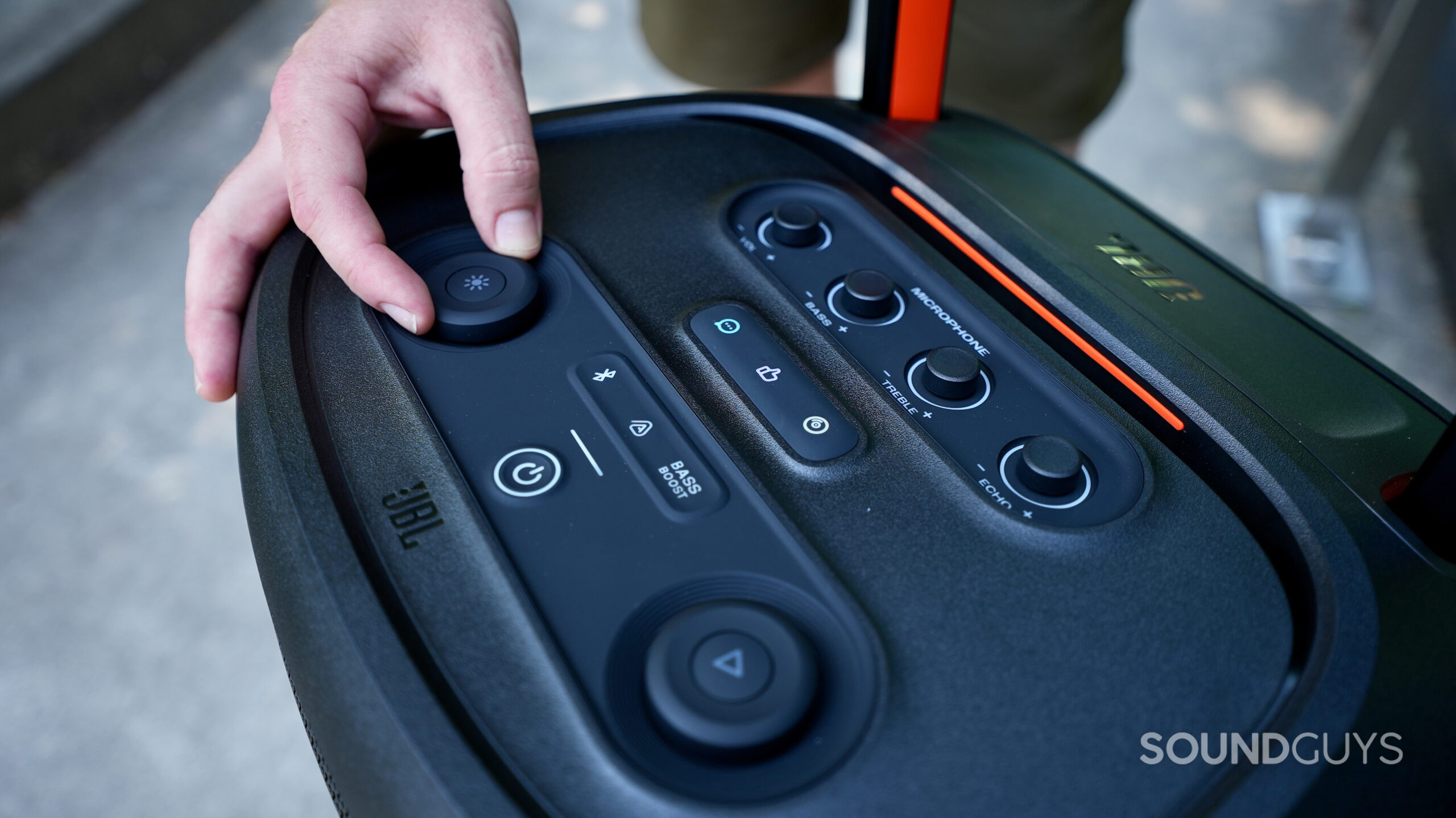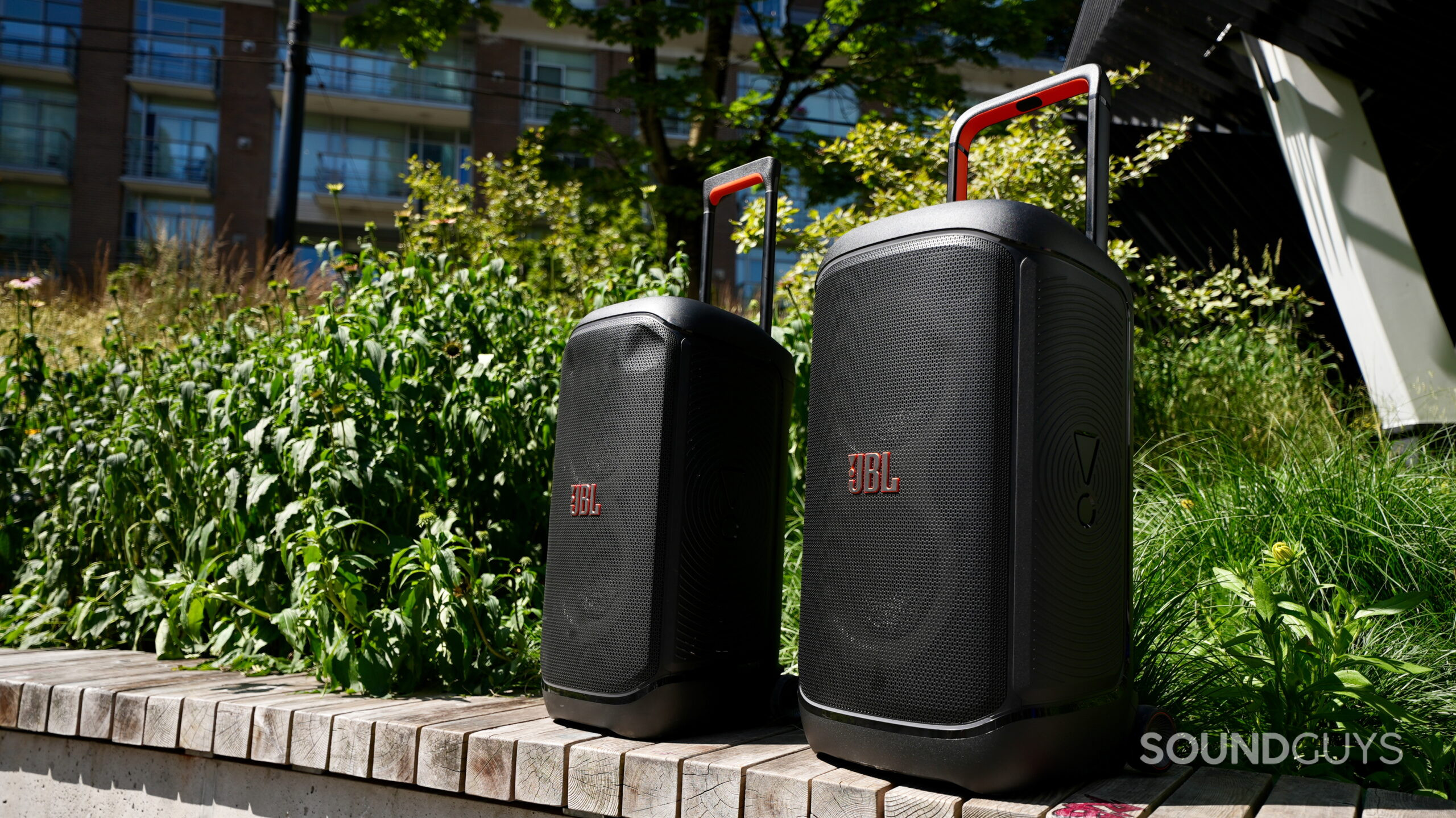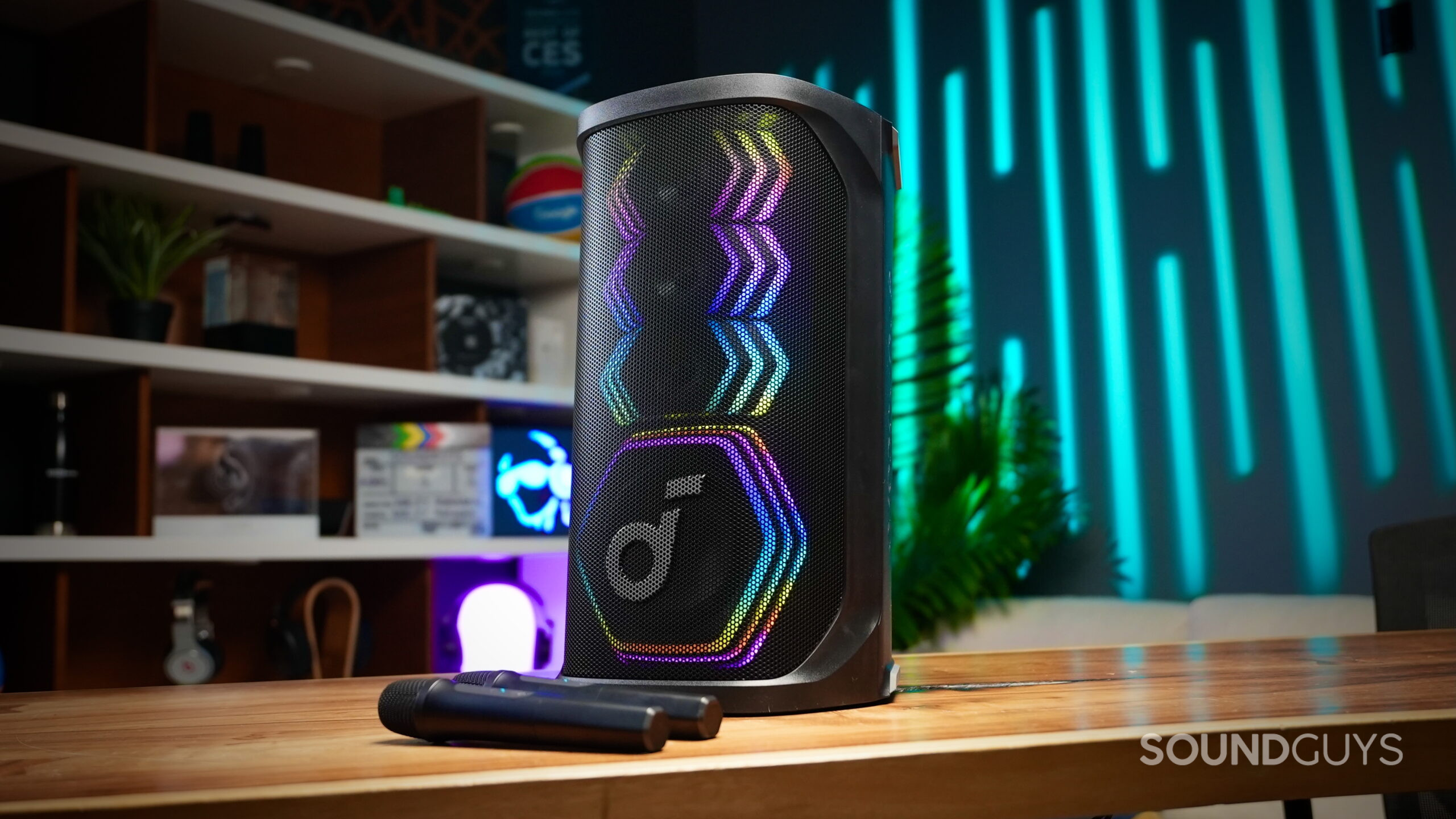All products featured are independently chosen by us. However, SoundGuys may receive a commission on orders placed through its retail links. See our ethics statement.
JBL PartyBox 520 vs JBL PartyBox Stage 320: Which PartyBox speaker should you buy?
July 7, 2025


The JBL PartyBox 520 is the newest addition to JBL’s PartyBox lineup, and at first glance, it looks nearly identical to its smaller sibling, the PartyBox Stage 320. The big difference? The 520 is, ya know, bigger. While they share a lot of design DNA, there are some key hardware and connectivity differences to keep in mind if you’re planning to throw a serious party. Let’s break it all down in this JBL PartyBox 520 vs Stage 320 comparison and help you decide which one fits your needs best
This article was published on July 7th, 2025, and is the first version.
What’s it like to use the JBL PartyBox 520 compared to the JBL PartyBox Stage 320?
Aside from the size difference, the JBL PartyBox 520 and Stage 320 share nearly identical design language. Both feature a rugged plastic shell, a metal grille protecting the drivers and party lights, a telescopic handle with wheels for portability, a rear input panel, and the exact same control layout on top. Lastly, both units are IPx4 rated, meaning they can handle light rain or splashes of water without issues.
The PartyBox 520 is the larger of the two and pushes out 400W of power, so naturally, it’s the heavier speaker. It weighs a little over 56 lbs, so yeah, lift with your knees if you’re propping it up on a counter or stool. The Stage 320 is smaller, offers 240W of output, and is a bit more manageable at around 36 lbs. Thanks to both models’ telescopic handles and built-in wheels, they’re still easy enough to roll around the house or out to the car.
How do you control the JBL PartyBox 520 and JBL PartyBox Stage 320?

Both the JBL PartyBox 520 and PartyBox Stage 320 feature physical controls on top of the speaker. You get a pair of dials to manage playback and lighting effects, as well as buttons for power, Bluetooth, Auracast, and Bass Boost. There are also three assignable DJ effect buttons and four EQ controls, including one labeled “echo” (though it’s actually reverb) to fine-tune the sound of any microphone or instrument you plug in.
Of course, the JBL PartyBox app also allows you to control various features, like sound and lighting customization, so it’s worth checking out.
Does the JBL PartyBox 520 or JBL PartyBox Stage 320 have more features?
The JBL PartyBox app offers a ton of control and customization for both the JBL PartyBox 520 and the nearly identical Stage 320. You can tweak the sound and light show on either speaker, reassign DJ effects, adjust some default controls, and link multiple PartyBox units for synchronized mono playback. If you’re after true stereo sound, though, you’ll need to pair two identical models. I paired the PartyBox 520 with the Stage 320 and did not run into any issues. It also sounded fantastic.
How do the JBL PartyBox 520 and JBL PartyBox Stage 320 connect?
Both speakers connect wirelessly via Bluetooth 5.4 and support multipoint pairing, but this is where the differences start to show.
The Stage 320 includes two 1/4-inch inputs for plugging in a microphone or guitar, plus a USB-A port that can either charge your device or play music from a thumb drive. The PartyBox 520 comes out ahead here, offering more flexible and modern connectivity. It features two combo XLR – 1/4-inch inputs, which are great for hooking up something like a DJ mixer, and an updated USB-C port that charges your device and supports lossless audio over USB-C.
Both models can be daisy-chained and include a 3.5mm aux input, but I have to give this round to the PartyBox 520. It’s simply more versatile.
Is battery life better on the JBL PartyBox 520 or JBL PartyBox Stage 320?
Both speakers can run wirelessly or plugged in with an AC cable, but when it comes to battery life, the Stage 320 pulls slightly ahead. It offers up to 18 hours of playback on a single charge, while the PartyBox 520 delivers around 15. You might be thinking, wait, the more expensive model has shorter battery life? Yes, but for a good reason. The 520 is a portable speaker that pushes 400W of power—big sound needs big energy.
Thankfully, both models support swappable battery packs. They use different batteries, but if you’re concerned about running out of juice, you can grab a spare from JBL and keep the party going all night.
Does the JBL PartyBox 520 sound better than the JBL PartyBox Stage 320?
If you want the loudest and most flexible option with the latest connectivity, including USB-C lossless audio and combo XLR – 1/4″ inputs, the JBL PartyBox 520 is the clear pick. It’s built for bigger spaces, higher output, and more demanding gear setups. With 400 watts of power and larger woofers, it also brings deeper bass and more volume, making it perfect for outdoor listening, large backyards, tailgates, or connecting a DJ mixer. Sure, it’s heavier and a bit more expensive, but you are getting serious power and versatility in return.
That said, the PartyBox Stage 320 still delivers impressive sound, just at a slightly smaller scale. It pushes 240 watts, uses the same tweeters, and sounds great for casual parties, indoor get-togethers, or smaller outdoor setups. It is lighter, easier to move, and offers slightly better battery life, which makes it a great option if you are not trying to max out on volume or pro-level inputs. In the end, both speakers sound great, your decision really comes down to how loud you want to get and what kind of gear you plan to plug in.
Whichever one you choose, remember that both speakers offer customizable sound through the JBL Portable app, complete with a 7-band EQ to fine-tune your music just the way you like it.
Should you get the JBL PartyBox 520 or JBL PartyBox Stage 320?

If you want the loudest, most flexible option with the latest connectivity, including USB-C lossless audio and combo XLR and 1/4″ inputs, the JBL PartyBox 520 is the clear pick. It’s built for bigger spaces, higher output, and more demanding gear setups. Yes, it’s heavier and a bit more expensive, but you’re paying for power and versatility.
On the other hand, the JBL PartyBox Stage 320 is the better choice if you want something more manageable in size, slightly longer battery life, and still plenty of punch for a backyard party or indoor event. It covers most of the same features at a lower price, making it a great value for anyone who doesn’t need the absolute max in volume or input options.
Both speakers will get your next party started, but your pick really comes down to how much volume you need and how you plan to use it.
What should you get instead of the JBL PartyBox 520 and JBL PartyBox Stage 320?

If you like the idea of a PartyBox-style speaker for your next backyard BBQ or pre-game tailgate but want something a bit more budget-friendly, check out the Soundcore Rave 3S. This party speaker delivers many of the same essentials, like a rugged build and customizable light show, but it ups the ante with two included wireless microphones and a built-in AI vocal remover that strips vocals from your favorite tracks. Talk about a karaoke party starter! Snag one for $349.99 at Amazon.
Thank you for being part of our community. Read our Comment Policy before posting.